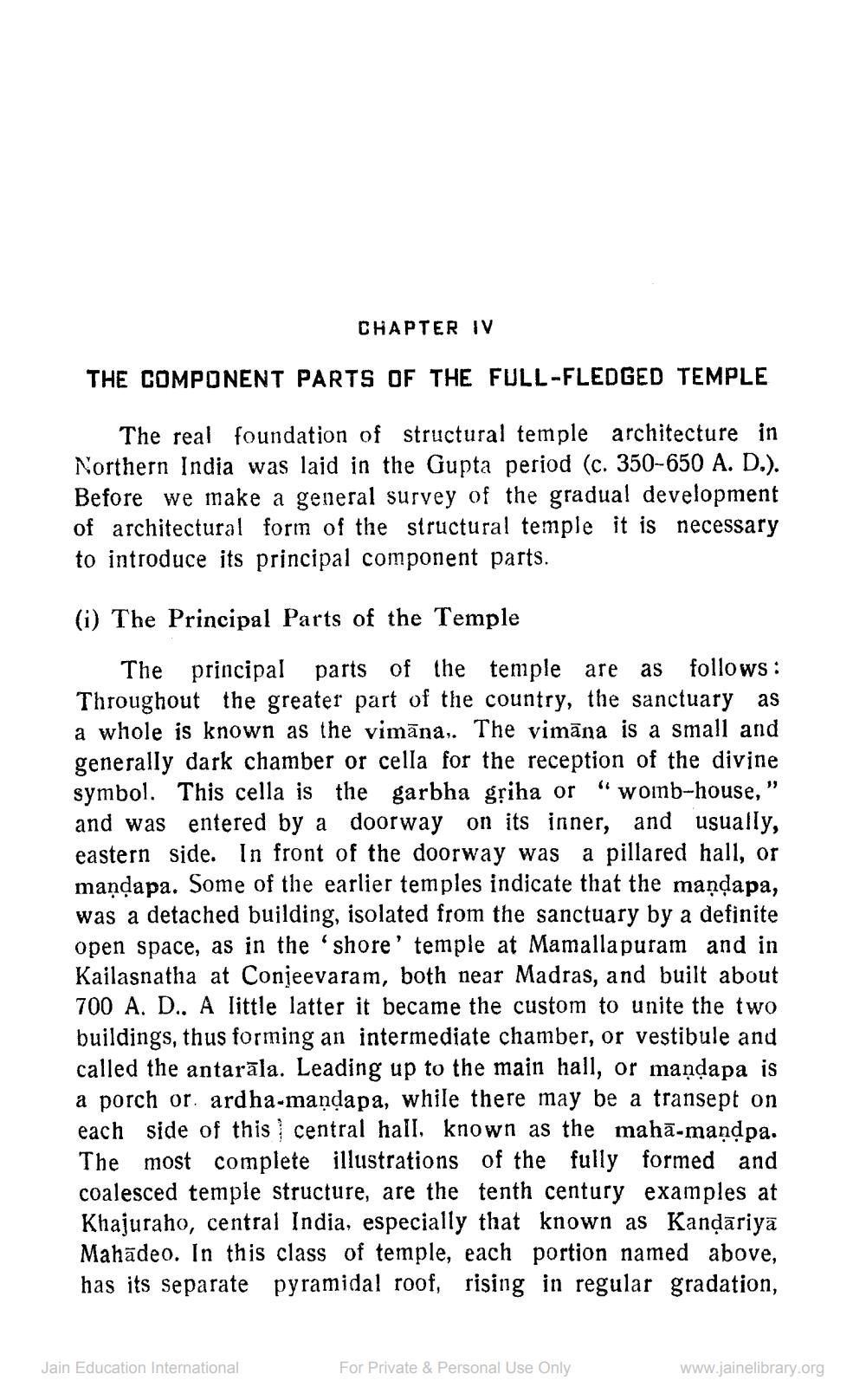________________
CHAPTER IV
THE COMPONENT PARTS OF THE FULL-FLEDGED TEMPLE
The real foundation of structural temple architecture in Northern India was laid in the Gupta period (c. 350-650 A. D.). Before we make a general survey of the gradual development of architectural form of the structural temple it is necessary to introduce its principal component parts.
(i) The Principal Parts of the Temple
The principal parts of the temple are as follows: Throughout the greater part of the country, the sanctuary as a whole is known as the vimāna,. The vimāna is a small and generally dark chamber or cella for the reception of the divine symbol. This cella is the garbha gļiha or “womb-house," and was entered by a doorway on its inner, and usually, eastern side. In front of the doorway was a pillared hall, or maņdapa. Some of the earlier temples indicate that the mandapa, was a detached building, isolated from the sanctuary by a definite open space, as in the shore' temple at Mamallapuram and in Kailasnatha at Conjeevaram, both near Madras, and built about 700 A. D.. A little latter it became the custom to unite the two buildings, thus forming an intermediate chamber, or vestibule and called the antarāla. Leading up to the main hall, or mandapa is a porch or. ardha-mandapa, while there may be a transept on each side of this central hail, known as the mahā-mandpa. The most complete illustrations of the fully formed and coalesced temple structure, are the tenth century examples at Khajuraho, central India, especially that known as Kandariya Mahādeo. In this class of temple, each portion named above, has its separate pyramidal roof, rising in regular gradation,
Jain Education International
For Private & Personal Use Only
www.jainelibrary.org




